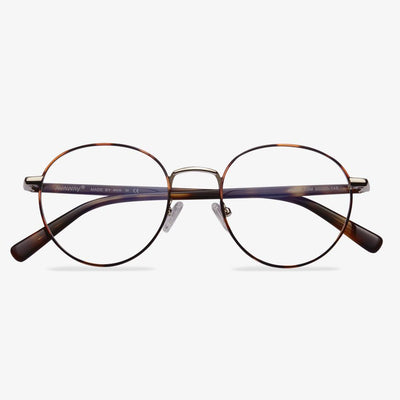Standard vs Premium Progressive Lenses: What Are Their Differences
In the above part, we have introduced some basic information about standard and premium progressive lenses. So, what are their differences? In this section, we will show them.
Compared with premium progressive lenses, standard progressive lenses require large frames. Otherwise, you will limit your near vision. On the contrary, if you prefer small and less noticeable frames, premium progressive lenses are the better choice.
Compared with premium progressive lenses, standard progressive lenses are cheaper. For most people, standard lenses are affordable.
Compared with premium progressive lenses, standard progressive lenses are suitable for most people including children.
Premium progressive lenses are customized to your eyes and offer a wider viewing area than standard lenses.
What Is Plastic Lens?
In the above part, we have introduced what polycarbonate lenses are. In this section, we will show you what the plastic lens is.
The plastic lens was first introduced in 1947. Since then, plastic has become a popular and widely used material for making eyeglasses lenses. Since the introduction and use of plastic lenses, it has sealed its mark as the most preferred choice in the optical industry.
Plastic lenses are light. With this feature, plastic lenses are popular because they will not be heavy inside the glasses frame and permit for an easy fit in any type of glasses frame. In addition, plastic glasses are cheap and easy to obtain in desired amounts. So, they are affordable for most people. Plastic lenses are very durable. So, they do not shatter easily on impact which makes it a great choice for individuals who are active or tend to drop their glasses often.
However, compared with other lens materials, plastic lenses are usually thick due to their low index of refraction. The soft feature of plastic glasses makes them susceptible to scratching from a sharp object and why scratch-resistant coating is applied to form an additional protective layer. Plastic lenses do not provide ultraviolet protection.
How to test a blue-light lens?
Blue light-blocking glasses have many membrane layers, and all kinds of colors of the film are not the same. Actually, the membrane layer of anti-radiation effects is not large but has high strength and chemical resistance of lining norm of glasses and the effect of protection for the eyes is very important.
What Are Progressive Lenses?
Your eyes change with your age. When your reach your 40s, you may find that it is difficult for you to focus between a book, a website on a computer screen and the conference room whiteboard. Progressive lenses are growing in popularity among people who need help seeing near, far and in-between.
Progressive lenses have grown in popularity and are one of the most common solutions to treat vision loss that occurs with age or presbyopia. Progressive lenses have a seamless increase in magnification from the top to the bottom of the lens, helping you see clearly at all distances with just one pair of glasses. The top portion of the lens enables you to see the far-away objects, the middle portion of the lens enables you to focus on the intermediate objects and the bottom to see objects close-up. The prescription changes little by little across the lens surface providing a gentle transition.
After knowing what the progressive lenses are, do you know what are the pros and cons of progressive lenses? If not, keep on your reading and we will show you some information.
What are bifocals?
A bifocal lens is a lens with two focal points. Because of the imaging principle of the lens, even half of the lens can still present a complete image, and the two images do not interfere with each other. In the past, both short-sighted glasses and presbyopia glasses were called single-focal lenses, which had only one focus. Later it developed to the bifocal lens, and the same lens is divided into upper and lower two parts. The upper part of that lens is used when seeing far, and you look down when seeing close objects, just the reading distance, naturally used the second half.
Identify the lenses of discount glasses
Look at the overall package: let him show you the overall package of the lens. See that if the factory is in China, Shanghai, China, or Zhejiang, China, etc. Look at the anti-counterfeiting logo. It doesn't necessarily mean it's good. Check the production plant, address, news, etc. In short, lens judgment, for the average consumer, is difficult, but when you put forward these requirements, the store will at least think you are more professional.
The width of your glasses is important.
The width of your glasses is not just to make you look more attractive. It's related to the position of your pupils in each lens, which is inextricably linked to the quality of your vision. The frame could be slightly wider than the zygomatic bones. It should be wide enough not to touch the temple. It should be close to holding a finger. This is especially important for people who wear bifocals or progressive glasses, so you can see through the right part of the lens.


















































